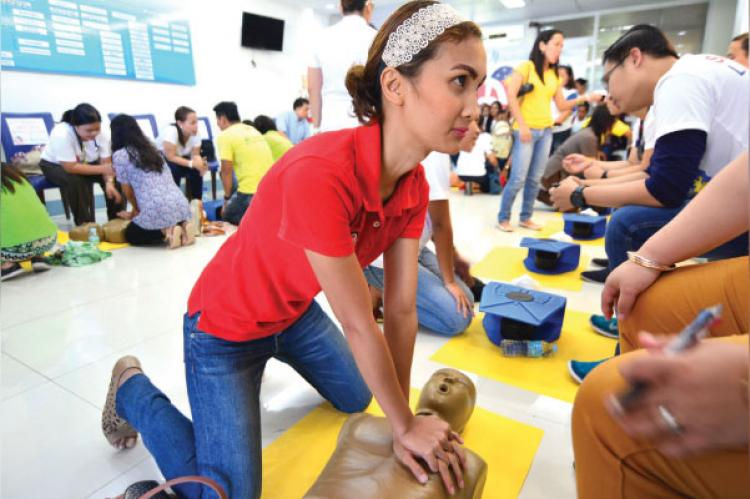DOH 7 wants public to learn how to do CPR to save lives
- OSOLINK WEB DESIGN
- Sep 19, 2019
- 2 min read

ALEX Sabandeja’s only regret was that he failed to revive his 50-year-old father who suffered a heart attack two years ago.
Sabandeja, 21, told Sun.Star Cebu that two years ago, his father Allan collapsed in front of him while picking calamansi outside their house in Argao, Cebu.
Doctors told Sabandeja that his father died of a heart attack and could have lived if cardiopulmonary resuscitation (CPR) had been applied on him for a few minutes.
But Sabandeja, a college student, said he didn’t know how to do CPR as it was not taught to him in school.
Sabandeja is but one of many Filipino students who don’t know how to do CPR.
Officials of the Department of Health (DOH) 7 stressed the need for people to learn CPR as a life-saving skill and called on all institutions, whether private or government, to make it mandatory.
The DOH has initiated a nationwide CPR trainings in all their facilities as part of their campaign to promote CPR.
In Central Visayas, DOH 7 regional office and DOH-managed hospitals, such as the Vicente Memorial Memorial Medical Center, simultaneously conducted trainings yesterday morning.
Dr. Jaime Bernadas, DOH 7 director, said doing CPR within the first 8-10 minutes is critical to the victim’s survival.
Without oxygen within the first 10 minutes, an unconscious person could suffer irreparable brain damage and could die, Bernadas said.
He said a bystander who knows CPR can help a person stay alive while emergency response is coming.
The following is how to do CPR on a person, the DOH suggested: Survey the area first to see it it is safe to apply CPR and check if the person is responsive by touching his or her shoulders.
If the person is unresponsive, roll the victim over on his or her back then call for help or ask somebody to call an ambulance or a doctor.
Start compression by placing the heel of one’s hand on the center of the victim’s chest and the other hand on top with the fingers interlaced.
Then press down and compress the chest for at least two to 2.4 inches in adults.
Compress 30 times with both hands at a rate of 100 to 120 per minute or more. Allow complete recoil after each compression.
To make compression easier, DOH officials suggested doing it in time with the song “Stayin Alive” by the Bee Gees.
After 30 compressions, open the airway by tilting the head and lifting the chin then pinch the nose to close it.
Then cover the victim’s mouth with yours to create an airtight seal and give one to two second breaths, while observing the chest rising.
Repeat the procedure until help arrives.
Dr. Alex Junia, national president of the Philippine Heart Association, said studies in the US show that CPR by bystanders increased the rate of survival of cardiac arrest victims there.
https://www.sunstar.com.ph/




Comments